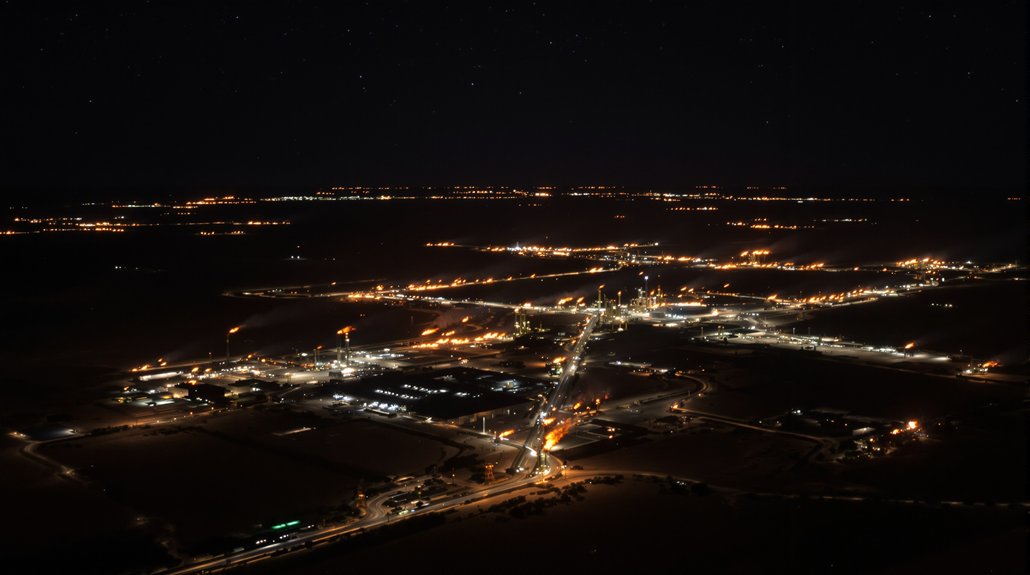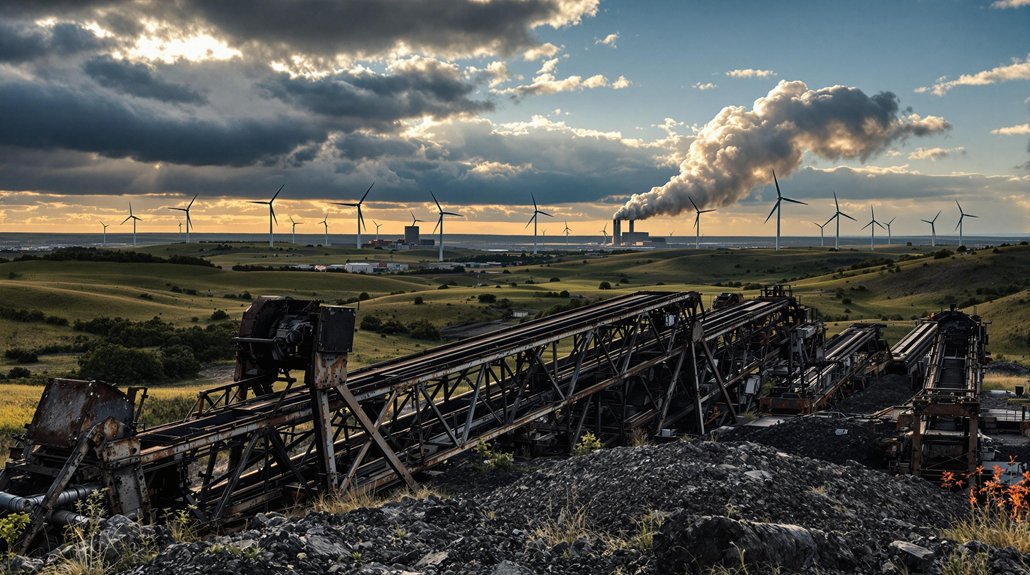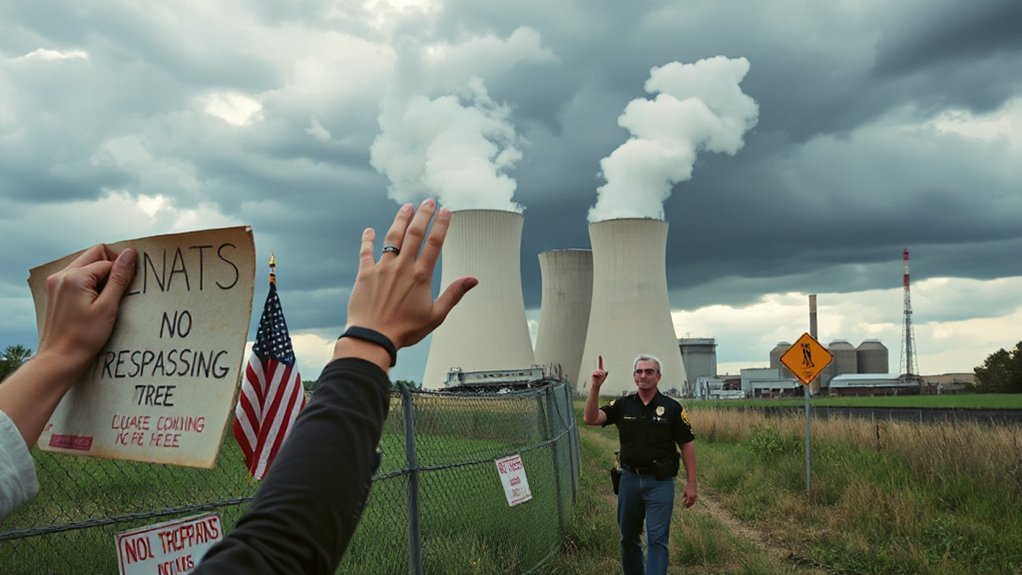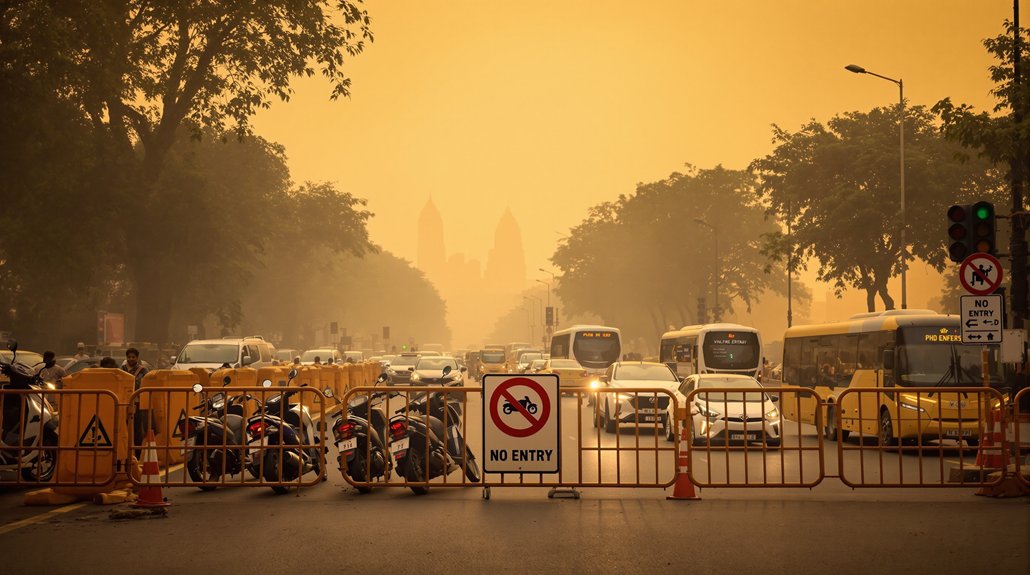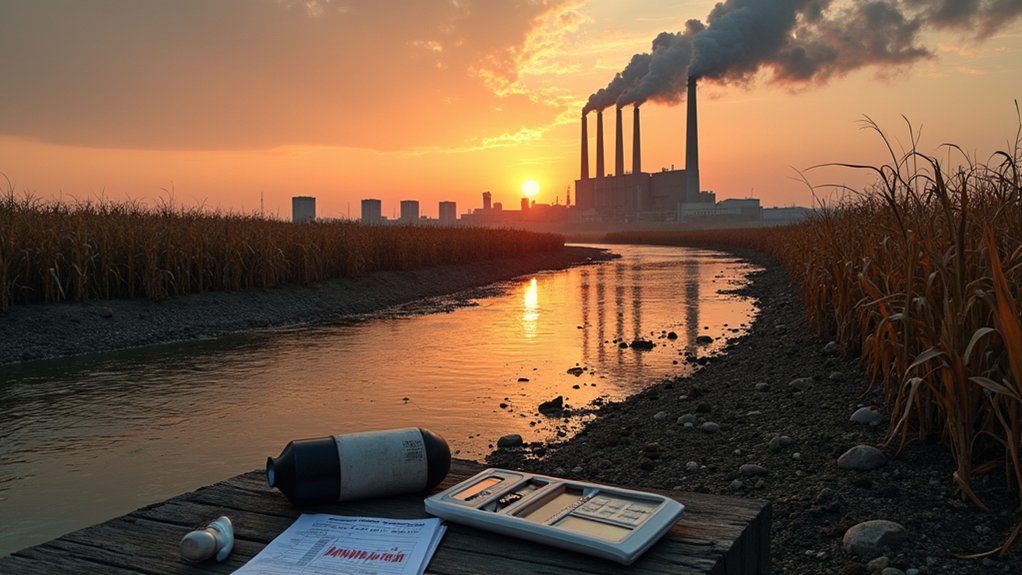Methane pours from Texas oil wells at alarming rates, even as industry officials tout their environmental progress.
Yeah, there’s been an 83% drop in methane intensity in the Permian Basin since 2011. Sounds impressive. But here’s the thing: the region still emits more than twice as much methane as any other U.S. oil and gas basin.
The numbers don’t lie. The Permian’s methane leakage rate stands at a whopping 3.7%, which is 60% higher than the national average. Translation? A climate disaster hiding behind cherry-picked statistics. This basin alone spews enough methane to match the annual CO2 emissions from all U.S. homes. Not exactly the “clean” oil some politicians love bragging about.
The Permian’s dirty secret: 3.7% methane leakage means “clean oil” is just another fossil fuel fairytale.
Flaring—that dramatic burning of excess gas you see in those picturesque oil field photos—has allegedly improved. The industry celebrates a 65% drop in flaring intensity since 2015. Great. Except 2023 saw an uptick, and surveys found at least 10% of flares aren’t even working properly. They’re just venting raw methane straight into the atmosphere. Oops.
The root problem? Texas doesn’t have enough pipelines. Despite pipeline network congestion worsening and impacting exports, operators have burned off roughly one trillion cubic feet of gas since 2013—enough to power every Texas home for three years. That’s a trillion cubic feet of money literally going up in flames. About $1.7 billion worth in 2019 alone.
Satellite monitoring has revealed the Permian Basin is the highest methane-emitting basin in the United States, with plumes of this invisible pollution spreading far beyond well sites.
Meanwhile, regulatory agencies are patting themselves on the back. The industry claims a 50% cut in methane intensity within two years. Impressive, if true. But experts point out these figures are often measured against unusually high baseline years. Convenient.
The environmental cost is steep. Methane supercharges climate change in the short term. The gas worsens regional air quality, harms public health, and increases light and noise pollution across Texas communities. A transition to renewable energy sources could dramatically reduce these emissions while providing more sustainable economic growth in the region.
But hey, production is up 482% since 2011! So there’s that.
References
- https://www.texansfornaturalgas.com/_methane_emissions_in_texas_permian_basin_remain_low_despite_near_record_production
- https://www.permianmap.org
- https://www.texastribune.org/2025/09/03/texas-methane-oil-emissions-climate/
- https://www.energy.gov/sites/default/files/2023-12/Ex. 14. Zhang 2020.pdf
- https://www.synapse-energy.com/sites/default/files/Texas Methane Waste and Pollution Factsheet 22-098.pdf
